The past few years have marked a changing of the guard in New York City’s fine dining scene. An ambitious new generation of Korean chefs claimed the culinary throne atop the Big Apple and covered it in gochujang. And now, a large portion of the city’s most prestigious restaurants and exciting new openings now fall under the category of contemporary Korean cuisine.
The movement can be traced back to the 2011 debut of Jungsik in Tribeca, from chef Jung Sik Yim, who previously worked at Aquavit and Bouley. Jungsik pioneered a particular model that’s central to the identity of many of the city’s biggest hits — incorporating Korean flavors into a high-end tasting menu with a bit of European flare — and it worked. Twelve years and two Michelin stars later, the restaurant’s influence is clear to see in each new opening.
New chefs emerged from the Jungsik empire, including Junghyun “JP” Park, who went on to open several establishments, most notably the two-star Atomix, alongside his wife Ellia. Similarly, Hoyoung Kim left Jungsik to open Jua, and more recently launched a slightly more casual concept, Moono. These were just part of a flurry of openings that kicked off in 2016 and continue today including Cote, Oiji Mi, Kochi, Mari, and Anto. There’s even a new spot with a 12-course tasting menu located inside the 34th street subway station.
Don’t Miss A Drop
Get the latest in beer, wine, and cocktail culture sent straight to your inbox.
The success of this movement is reflected in New York’s latest Michelin Guide, which awarded stars to 10 Korean restaurants (out of 70 starred establishments in total) in 2023, including two new additions, Bōm and Meju. Atomix currently ranks as the eighth best restaurant in the world, according to the 50 Best list.
So that’s the food side of things, but what about the beverage programs?
Korean cuisine has often been unfairly relegated to the “difficult to pair” category in the U.S., due to its fermented flavors and preparations. While restaurants historically featured limited selections of beer or soju, the beverage directors at today’s forward thinking establishments have pushed the boundaries of what Korean drinks programs can look like, with many curating extensive, award-winning wine lists and pairing menus.
Some in the movement are using the spotlight to highlight Korea’s traditional drinks and drinking culture, incorporating unique Korean “sool” (alcoholic beverages) into their programs and emulating the atmosphere of Korea’s “pocha” or pubs.
Read on to meet the talented professionals behind the beverage programs at NYC’s most exciting Korean restaurants.
Ellia Park
Co-founder, NA:EUN Hospitality (Atomix, Atoboy, Naro, Seoul Salon)
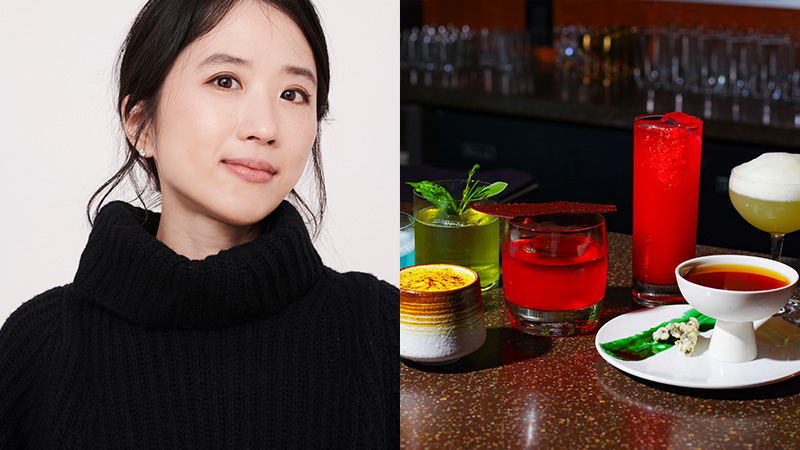
Junghyun “JP” and Ellia Park, the husband-and-wife team behind NA:EUN Hospitality, opened Atoboy in 2016, followed by Atomix in 2018, and finally Naro in 2022. While each has its own concept and price point, they all adhere to the tasting menu format.
That style of dining is relatively uncommon in traditional Korean cuisine but Ellia insists that breaking down flavors into individual courses was essential to conveying their message. “Unlike the traditional hansang meals, tasting menus allow for a focused exploration of each course or dish,” she says. In addition to showcasing one flavor or concept at a time, this allowed them to “seamlessly integrate beverage pairings into Korean culinary experiences.”
Just as their restaurants have helped bring Korean culture to the foreground through food, Ellia and JP hope their latest opening, Seoul Salon, will replicate this for beverages. The spot’s drinks menu, which includes an extensive selection of Korean sool, forgoes wine in favor of cocktails, each listed with a brief description of the aspect of life in Seoul that inspired it. For example the “Deli Manjoo” is made with D’usee VSOP Cognac, cream liqueur, stout beer, demerara, and corn custard cream, and is accompanied by a few sentences on how the Deli Manjoo is a popular dessert filled with custard cream that got its start in a subway station. Its smell is now often associated with Seoul’s transport hubs.
“By crafting cocktails based on Korean ‘sool,’ we aim to convey the contemporary drinking culture and menu preferences enjoyed by Koreans these days,” Ellia says.
Jhonel Faelnar
Beverage Director, NA:EUN Hospitality (Atoboy, Atomix, Naro, Seoul Salon)
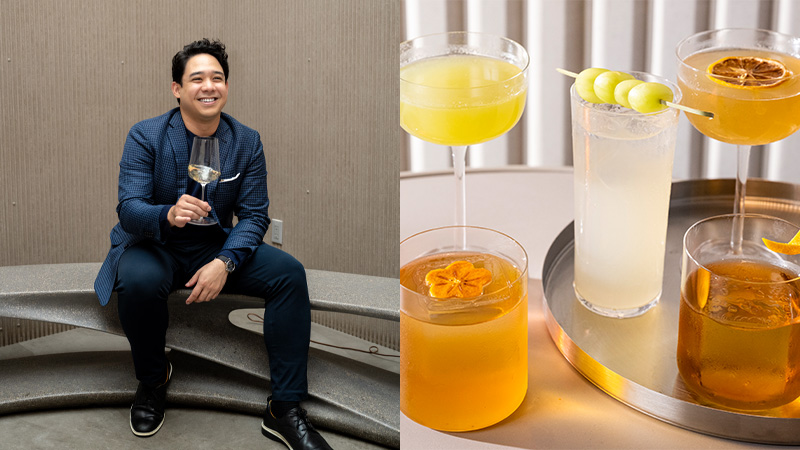
Also part of NA:EUN Hospitality, Jhonel Faelnar is the group’s beverage director, heading up the drinks programs for the laid-back Atoboy, world-renowned Atomix, and ambitious new restaurant Naro. While each has a different underlying concept, wine is the primary focus at all three spots.
Some might overlook wine when matching with Korean flavors, but Faelnar took the challenge as an opportunity to push boundaries. “If anything, pairing wines with [modern Korean cuisine] is the most exciting thing to come to the New York dining scene in the last few years,” he says.
One example that Faelnar gives is serving lean, lightly reductive white wines with sesame oil. “Wines like Palomino or Chardonnay from Burgundy that have a little bit of the smoky nose work really well with these dishes,” he says. Faelnar also notes a specific dish at Atomix that showcases how the most difficult pairings can often turn out to be the most interesting. The course features Silkie chicken in a deep but delicate broth made with ginseng and jujube. Most wines either overpowered or distracted from the dish, but eventually he found that Benjamin Leroux’s Aligoté from Burgundy had the perfect body, texture, and flavor to stand up to the food. It also offered a saline finish that added an extra accent to the experience.
Joo Lee
Beverage Director, Anto
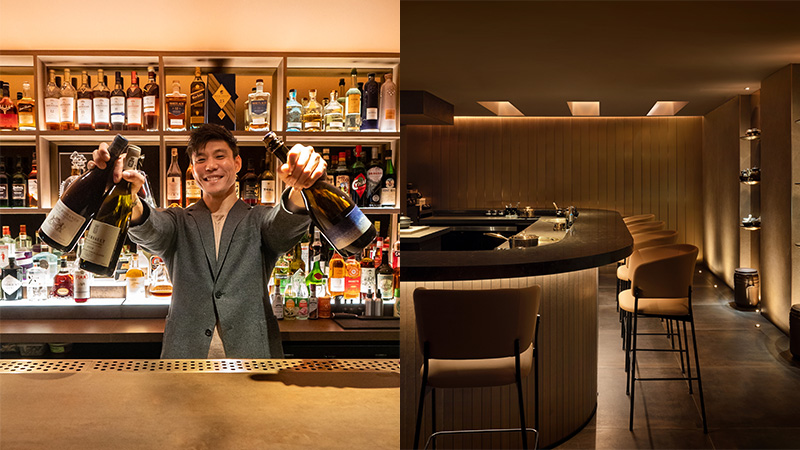
After years working as a sommelier at restaurants like Eleven Madison Park and San Francisco’s Saison, Joo Lee took the lead as beverage director at Anto, a Midtown East restaurant that opened in March, 2023. Anto acts as both a Korean steakhouse on the first floor and a chef’s counter upstairs. And though Lee mentions “the most challenging part is convincing people that wine is good with Korean food,” it’s not such a hard sell when the first pour is Krug.
With a large focus on French wines, Lee’s approach for Anto’s chef’s counter menu is to seamlessly shift between classics and the unexpected. One of his favorites from the premium pairing menu is aged duck with a 2015 premier cru Pommard. But this iconic duo is preceded by some less traditional courses like seaweed soup, filled with heaping portions of uni, lobster, and abalone, paired with sake, as well as a carabinero shrimp dish paired with an earthy Sicilian rosato.
His approach is guided by the fundamentals he learned and practiced at “traditional” fine dining establishments. “Korean food isn’t very acidic, there isn’t a lot of citrus and vinegar. Kimchi usually brings that acidity to complement the dishes,” he says. “But that’s also what wine can do, bring that acidity. And it can also bring tannin, fruit, and spice, which adds a whole new element to the experience.”
“We’re in a globalized world,” he adds. “It would be silly to limit yourself to tradition.”
Victoria James
Beverage Director, Cote
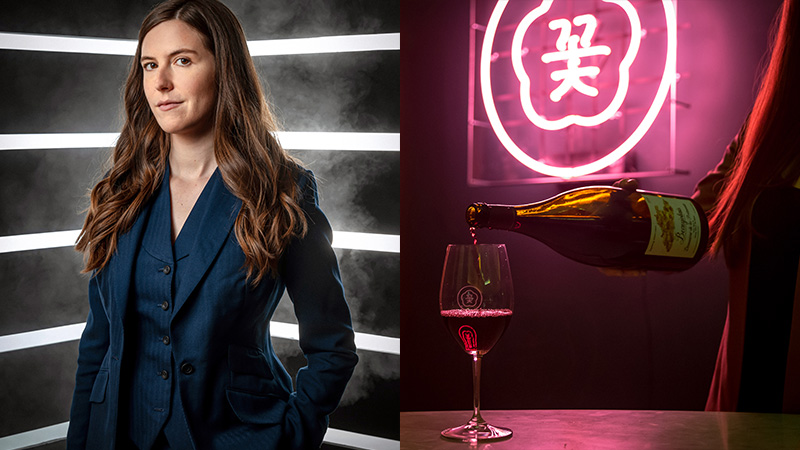
When beverage director Victoria James opened Cote alongside chef Simon Kim in 2017, she wanted the wine list to make a statement. “At the time there was really only Jungsik and Atoboy — those were the only places that were doing wine with elevated Korean food in NYC in a real way,” she says. “Before we opened, I would talk to Simon about how we could make an entrance onto the wine scene and have people take it really seriously, especially since we were a young woman and a Korean American fighting up against an old boys club of classic French and Italian places.”
Kim set out to combine his love for Korean cuisine with his infatuation with the fat cat American steakhouse. “It wasn’t a traditional Korean BBQ with beer and soju, it was a Korean steakhouse,” James says. “It was hard to get that message across, so we had to go above and beyond with the wine list.” When the restaurant opened, she stocked the cellar with verticals of Clape Cornas, Raveneau Chablis, and Madeira. James took the list a step further and upped the ante by pouring all of the by-the-glass wines from magnums.
Don’t discount that as a gimmick, though. Large format bottles typically keep wines fresher for longer, and James knew the program would scream “better than everything.” There’s also a reason no one else in the U.S. takes this approach: “It’s really freaking hard,” James admits, noting how she has to go directly to growers and ask for special bottlings ahead of time, adding another leg of work to the already complex system.
Still, the iconic magnum bottles remain a central part of the Cote dining experience. “It’s our love language to the guests,” she says.
John “JP” Park
Beverage Director, SC Hospitality Group (Kochi, Mari, Mari.ne, and Don Don)
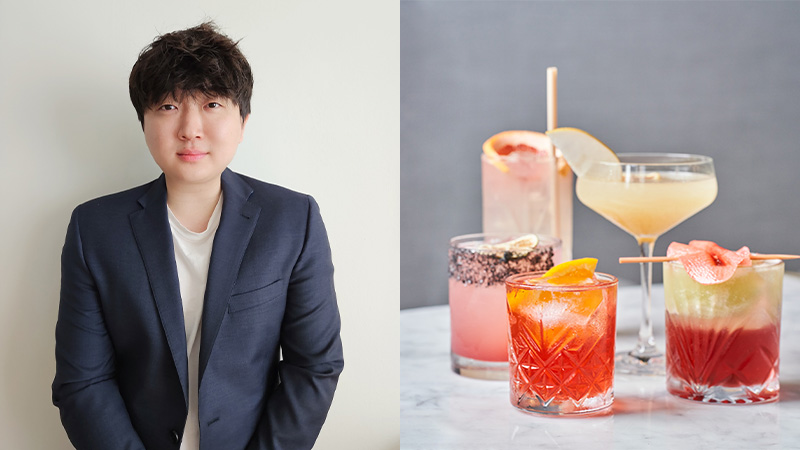
The most rapidly expanding empire in the contemporary Korean restaurant space is that of chef Sungchul Shim.
Shim debuted his first restaurant Kochi, which focuses on Korean-style skewers, in 2019, followed by Mari in 2021, which offers a tasting menu of Korean inspired hand rolls. (Both are now Michelin-starred.) More recently, Shim started exploring the more casual, but still elevated, side of Korean cuisine with Mari.ne, a hand roll counter, and Don Don, a Korean BBQ spot focused on pork. Overseeing the beverage program for this all-star restaurant group is John “JP” Park, who curates drink menus to fit the unique vibe of each of the spots.
As the higher-end restaurants in the group, Kochi and Mari offer beverage pairing menus, as well as extensive wine lists. At Kochi the flavors are big and rich, so Park pairs wines that are more full-bodied, saltier, and have heavier tannins. At Mari, where each hand roll course conveys a different set of Korean flavors, the menu is mostly seafood, so Park reaches for crisp white wines and cocktails that incorporate fresh ingredients like yuzu.
One of the most surprising matchups from the Mari tasting menu is the jook, a Korean dish similar to rice porridge, served with a glass of Jangsu Omijaju, a liqueur made with fermented magnolia berry that’s then aged for three years and added to soju. “I call it a Korean rosé,” Park says. “Pink in color and very attractive. It starts with sweet, salt, and bitter at the same time. The acidity cuts down the thickness of the jook.”
The group’s new restaurant, Don Don, gave Park a chance to showcase another side of Korean drinking culture. “Most of the restaurants are fine dining — this one is more laid back so we want to have fun with it, and we want the guests to have fun too,” Park says. To do this, he introduces guests to somaek, a combination of roughly one shot of soju and two shots of beer. “It goes well with traditional barbecue, and it translates to having a good time,” Park says. “It’s the heart and soul beverage of all Koreans.”
Chris Clark
Beverage Director, Oiji Mi and Bōm
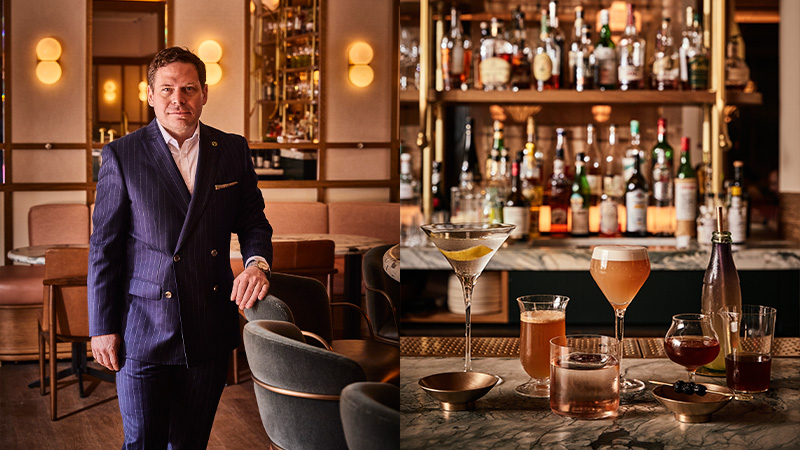
When Chris Clark was brought on as the beverage director for chef Brian Kim’s high-end tasting menu concept Oiji Mi, he was ready to assemble a top-notch soju program. But instead, the team wanted an entirely wine-focused menu, insisting that while the food was inspired by the flavors of Korea, this was a restaurant for New York. Clark ran with the directive, and curated one of the most impressive wine lists in the city.
It features many of the expected baller Champagnes and Burgundies, as well as a large Riesling selection, and a deep collection of hard-to-find bottles and unheard of wines from small producers. “For me, the baseline is showcasing wines from small grower-producers that are honest about their vinification and farming,” Clark says. “We want to turn people on to new experiences and get them excited about new finds.”
Such an extensive — and expensive — selection requires special attention from the moment bottles arrive at Oiji Mi. The restaurant is home to four different temperature-controlled storage spaces, while the by-the-glass wines are kept in a specialty imported cooling system. Clark also works with at least six different glassware companies to ensure each pour is presented in the ideal vessel.
Beyond the a la carte wine and cocktail selections, Oiji Mi also offers a pairing menu with combinations that span from technically sound to exciting curveballs. One example of the latter is the savory and mineral-driven Prima Terra Vino Rosato from Italy’s Cinque Terre region paired with a chili lobster ramyun.
If that sounds extravagant, Clark cranks it up to 11 for the experience at Bōm, chef Kim’s latest opening. Located in a private room in the back of Oiji Mi, Bōm is a chef’s counter with a 12-course, $325 tasting menu (with the option of a $275 beverage pairing). The room screams luxury, and the wines live up to that billing. Guests can enjoy pairings from iconic producers and back vintages alongside the indulgent courses. For example, the dry-aged ribeye with celeriac and tomato geotjeori is served with a 1996 Schiopettino from Ronchi di Cialla.
Jaehoon Nom
GM and Beverage Director, Jua and Moono
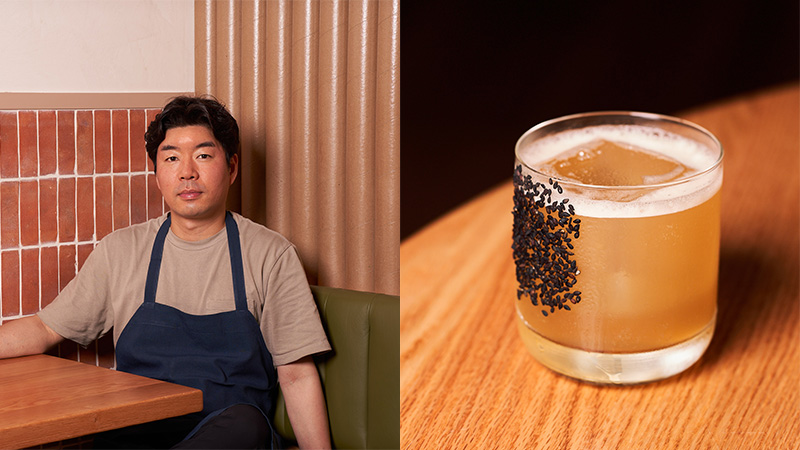
With an education in French cuisine and eight years of experience working at Jungsik, chef Hoyoung Kim opened Jua, a Korean wood-fired tasting menu spot with a clear French influence, in 2019. General manager and beverage director Joehoon Nom reflects this approach in the beverage program, with a vast French wine selection and overall wine-focused pairing menu.
“I love French wines like everyone else,” Nom says. “In my opinion, Chenin Blanc from the Loire and Gamay from Beaujolais pair well with Korean food in general.”
While more classically European pairings feature at Jua, the group’s latest opening, Moono, is a more casual, family-style dining experience (although its location in a gorgeous three-story, landmarked building and menu filled with uni and truffle would suggest otherwise). Since it explores more traditional Korean dishes, Nom finds Moono to be a better outlet for introducing Korean spirits and more uncommon wine selections. The wine list also skews more “natural,” as Nom believes that fermented flavors match well with the funkier and gamier natural wines.
Moono also uses its cocktail menu as a platform to incorporate Korean flavors. “Not everybody is an adventurer so we tried to find a balance by adding Korean flavors to cocktails,” Nom says. A great example is the Open Sesame, made with sesame infused bourbon, genepy, licor 43, and chocolate.
Overall, Nom would like to introduce even more Korean drinks and drinking culture in both locations — especially given that New Yorkers are open to trying new things and are increasingly understanding how versatile Korean cuisine can be. Since the dawn of the city’s contemporary Korean renaissance, “it’s become a lot easier for us to showcase Korean food and drink culture at our restaurants,” Nom says.